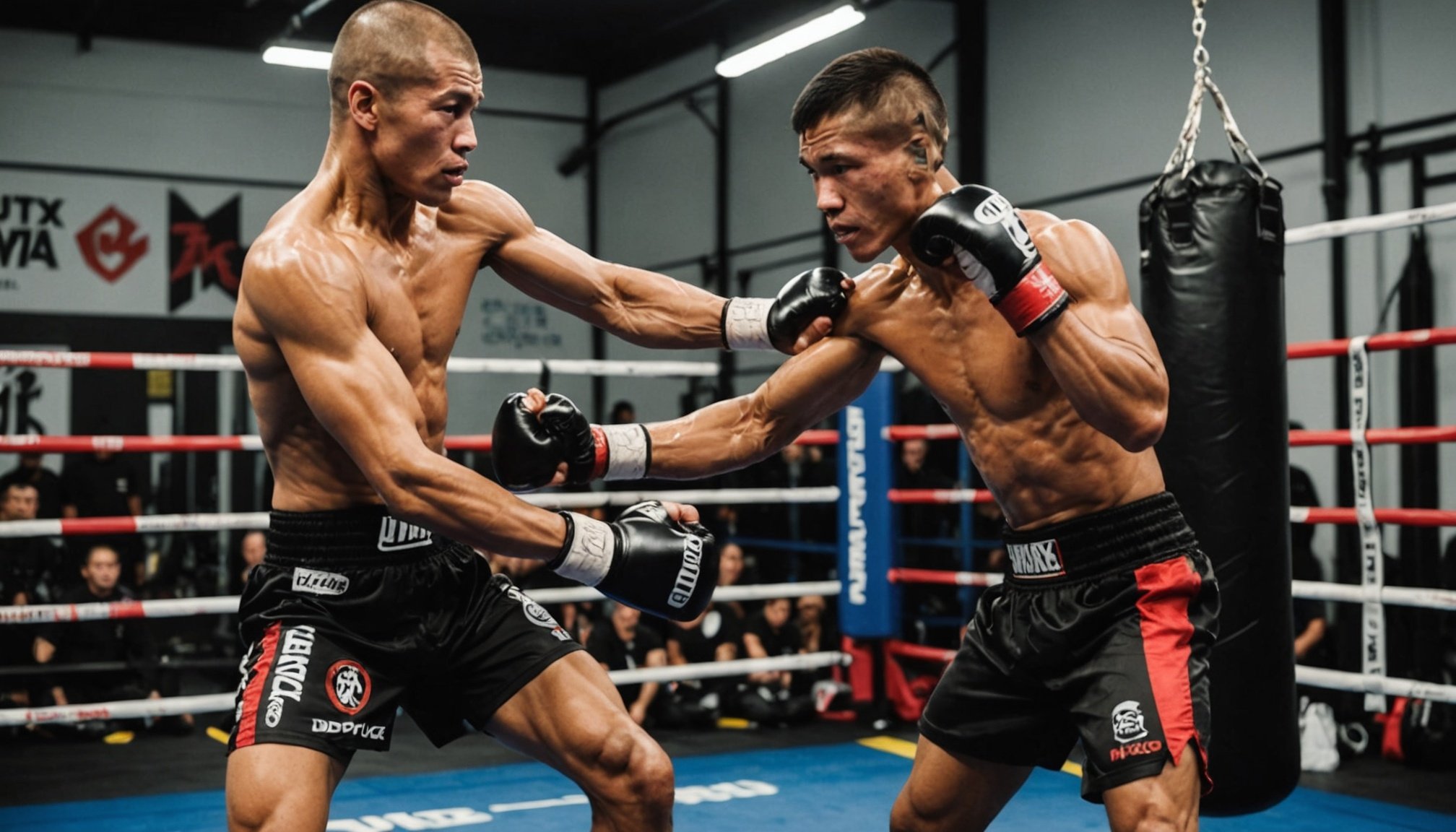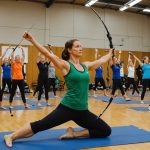Understanding the Clinch in Muay Thai
Clinch techniques are a vital aspect of Muay Thai fundamentals. They serve as both a weapon and a shield. Clinching allows fighters to control their opponent’s movement, dictating the pace and direction of the match. In essence, it’s a fighting strategy that combines offence and defence seamlessly.
Different martial arts approach the clinch uniquely. In Muay Thai, the clinch is more aggressive, aiming to strike with elbows and knees. This contrasts with other martial arts that may focus on grappling or neutralising opponents. Understanding these differences enhances a fighter’s ability to adapt and incorporate Muay Thai fundamentals into their combat style.
Additional reading : Unlocking Peak Performance: UK MMA Fighters” Guide to Enhancing Cardiovascular Endurance Through HIIT Training
Mastering clinch techniques involves learning several key skills:
- Positioning: Set up a strong base to withstand pressure.
- Balance: Maintain control while disrupting your opponent’s equilibrium.
- Grip Control: Use effective grips to control the opponent’s movement.
- Striking: Integrate elbows and knees to maximise damage.
These elements integrate into an effective fighting strategy. Practising the clinch techniques with dedication can significantly enhance a fighter’s performance in the ring, setting apart proficient fighters from novices.
Additional reading : Top Weight Cutting Techniques for UK Boxers: Unleashing Peak Performance
Strength Training Fundamentals for Muay Thai
To excel in Muay Thai, a robust foundation in strength training is crucial. Strength training enhances athletic conditioning and bolsters overall physical fitness, pivotal for success in this demanding martial art form.
Benefits for Muay Thai athletes extend beyond mere muscular growth. Improved muscle strength results in powerful strikes and better endurance, key to enduring lengthy matches. It also aids in injury prevention, which is essential given the sport’s intense physical demands.
Focusing on essential muscle groups is critical, especially for effective clinch performance—a fundamental aspect of Muay Thai. Strengthening the core muscles, such as the abdominal and oblique muscles, grants better balance and stability. Upper body strength, particularly the shoulders, arms, and grip muscles, is indispensable for controlling opponents, while lower body strength enhances explosive power in kicks.
Integrating strength training seamlessly into Muay Thai practice requires a strategic approach. It should complement rather than detract from martial training, with tailored routines revolving around sport-specific needs. Opt for compound exercises like squats and deadlifts to stimulate multiple muscle groups simultaneously. Balancing training loads between strength sessions and Muay Thai practice optimizes both skill development and physical conditioning, ensuring that athletes achieve peak performance in the ring.
Specific Exercises for Enhancing Clinch Strength
Developing clinch strength is essential for success in many combat sports. To maximise clinch capabilities, a blend of functional strength exercises, resistance training, and stability exercises is crucial. Start by focusing on grip strength and upper body stability through dedicated practices such as farmer’s walks, which engage the shoulders and forearms. Implement pull-up variations like towel pull-ups to simulate gripping and increase overall grip endurance.
In parallel, enhancing lower body strength is key to maintaining balance and control while clinching. Implement squats and lunges with added resistance to improve leg power, ensuring you can hold your ground or position effectively. This training offers the added benefit of improved balance, which is crucial when grappling an opponent.
Resistance exercises should be complemented with core workouts that maintain posture and provide power during clinching. Planks, Russian twists, and medicine ball throws are excellent choices and contribute significantly to an athlete’s ability to stabilise in the clinch while executing strategic maneuvers.
By integrating these exercises into your routine, athletes can ensure a well-rounded approach to enhancing clinch strength, ultimately improving performance in combat situations.
Sample Workout Routines for Clinch Conditioning
When creating effective workout routines for clinch conditioning in Muay Thai, it’s crucial to incorporate both strength training and clinch-specific drills. A well-rounded weekly strength training regimen should focus on building core strength, agility, and endurance, which are all vital for excelling in the clinch.
Training methodologies should adapt to include exercises like deadlifts, squats, and pull-ups, which build foundational strength. However, simply lifting weights is not enough. Incorporating clinch-specific drills—such as neck wrestling and partner resistance exercises—enhances grip strength and strategic control vital for competition.
Fitness planning also involves adjusting training intensity and volume according to preparation phases. During competition phases, workouts must become more focused, potentially increasing intensity while reducing volume to prevent overtraining. Outside competition times, athletes can afford longer sessions with varied techniques and combinations, promoting skill diversification and endurance.
Thus, a thoughtful combination of strength exercises, targeted drills, and strategic intensity adjustments ensures comprehensive preparation. Such a fitness planning approach guarantees that practitioners maintain their competitive edge, while safeguarding against injury and promoting peak performance in the clinch.
Practical Tips for Training in the UK Context
The UK is becoming a vibrant hub for Muay Thai enthusiasts, boasting an array of training facilities and gyms catering to both beginners and seasoned athletes. Notable gyms such as KO Muay Thai and Warrior’s Gym offer top-notch coaching and equipment. These establishments are known for their friendly environments and diverse athlete community that is always eager to welcome newcomers.
In addition to physical training, immersing oneself in the culture of Muay Thai is essential for success. This vibrant community is often more than willing to share knowledge, skills, and camaraderie. Engaging with fellow enthusiasts can significantly enhance your training journey.
Local competitions and events are plentiful and provide invaluable experience for practitioners. These gatherings, such as the Muay Thai Grand Prix, are perfect opportunities to test skills, improve techniques, and build confidence. For those new to the sport, attending these events can inspire and motivate.
To get the most out of the Muay Thai experience, consider exploring a variety of gyms and events. This not only broadens skill sets but also helps build a robust network within the Muay Thai community.
Expert Insights and Athlete Testimonials
Muay Thai, with its rich traditions and rigorous training, thrives through the shared wisdom of coaching tips and athlete experiences. UK Muay Thai coaches often highlight the importance of strength training in enhancing performance. Not only does it form the backbone of power and endurance, but it also sharpens clinch techniques.
Athlete testimonials vividly underscore how dedicating time to building strength can transform one’s approach to the sport. One Muay Thai athlete remarked, “Incorporating strength training into my routine has greatly improved my clinch performance.” This anecdote echoes throughout the community, suggesting a strong link between well-rounded, strength-focused training, and improved results in the ring.
Another frequent piece of advice from coaches is to integrate performance feedback into training regimes. Through consistent feedback, athletes learn to fine-tune their techniques, focus on areas needing improvement, and celebrate strengths. Combining athlete experience with well-structured performance feedback ensures that those pursuing Muay Thai can strive for the best results possible. This holistic approach illustrates how coaching tips and shared experiences can significantly propel athletes towards success. Whether it’s clinching or executing a powerful roundhouse, the role of strength training remains undeniably central.











